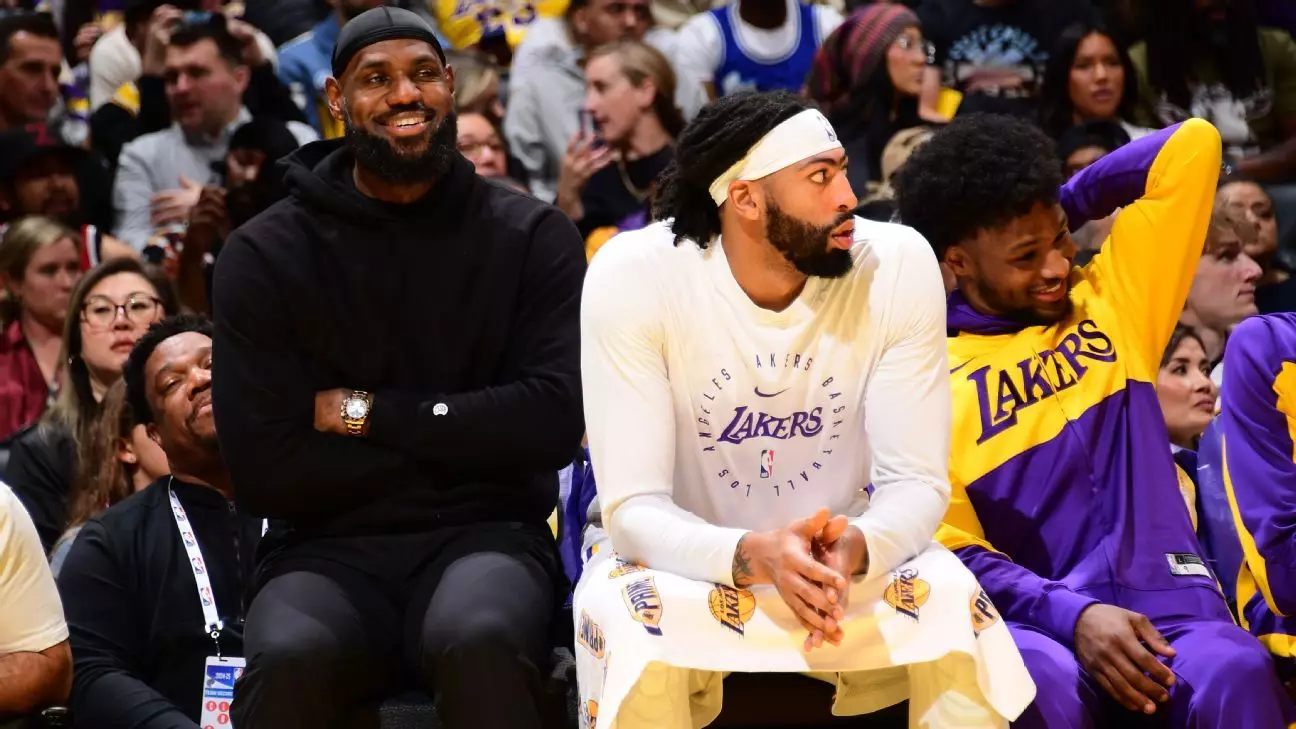The Los Angeles Lakers faced a considerable challenge on Sunday night as they navigated their first game of the season without the presence of their star player, LeBron James, due to left foot soreness. At 39 years old, James’ health is paramount not only to his own performance but also to the overall success of the team. This situation raises important questions about the Lakers’ reliance on their veteran leader and how they can adapt in his absence.
James first felt discomfort during a match against the Miami Heat, and despite showcasing his resilience by playing 43 minutes against the Atlanta Hawks, the pain ultimately sidelined him. Notably, in that recent game, he recorded a remarkable triple-double, underlining his continued contribution despite his age. With an average of 23 points, 9.1 assists, and 8 rebounds this season, James has set a standard that not only highlights his individual prowess but also showcases his significance as the backbone of the Lakers’ strategy.
In the wake of James’ absence, Lakers coach JJ Redick emphasized the need for a collective effort from the squad. He highlighted the necessity for movement and teamwork, urging players to focus on transition and paint touches—a strategy that seemed to have been overlooked recently. This is crucial for establishing a rhythm and maintaining offensive fluidity, particularly when a playmaker of James’ caliber is missing from the court.
Redick expressed that while having a player like LeBron sidelined is a setback, it provides an opportunity for the team to recalibrate its game plan. Such a break can be advantageous, allowing both James and other players like Austin Reaves—who is also dealing with injury—a chance to recover fully. This time off could potentially rejuvenate James, ensuring he returns not just as a player but as a leader who can once again elevate the team’s performance.
Looking ahead, the Lakers face a critical period. They do not have a game until facing the Minnesota Timberwolves later in the week, allowing them more time to adjust without their veteran stalwart. However, challenges remain, particularly in managing the expectations of the rest of the squad. The Lakers must adapt quickly to an environment without James’ experience and leadership, which could place added pressure on younger players to step up.
In addition, the complexity of the Lakers’ offense relies significantly on their ball movement and chemistry, elements that could be strained in the absence of a central figure like James. The efficiency and execution of those systems will be pivotal in determining how well the team performs in upcoming matchups.
LeBron James’ absence presents a significant challenge for the Lakers, testing the depth and adaptability of the roster. While his injury comes with inherent risks, it also provides opportunities for growth and reformation within the team structure. As the Lakers navigate the landscape without their star, all eyes will be on how they respond to adversity and whether they can maintain their competitive edge in the Western Conference. The multi-faceted implications of this situation underscore the delicate balance between player health and team performance in the high-stakes environment of professional basketball.

